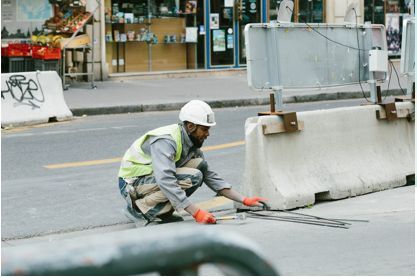Contractors do several things before they start a construction project. One of the initial things is to assess the commercial property and what reinforcements they need to secure the area, including preventing soil erosion.
Planning for retaining walls
Choosing what type of retaining walls to use on a construction project takes careful planning. The contractor needs to know specific details about the ground conditions on the site and the other variables presented by the area surrounding the property, underground and above ground.
Here are the broad descriptions of contractors’ steps to analyse and plan the placement of retaining walls.
• Site geometry. The contractor will check the existing physical features of the location, observing the soil condition and type and the site geometry of the possible location of the retaining walls and the surrounding area. They will check the patterns of natural drainage and identify other locations that need retaining walls. Other things of concern are the ground elevations, vegetation, structures, utilities, and lot lines. The conditions behind and above the walls will influence the maximum height of the retaining walls before using additional reinforcement.
• Soils. Before the contractors decide on the type of soil retaining wall, they need to check the soil behind and below the potential areas for the retaining walls. Understanding the characteristics and properties of the soils in the site is the key to choosing the most appropriate walls. In a property, different soil types may exist. Therefore, the contractors have to calculate the time they need for compaction, the reinforcement they need, and the cost of the retaining walls they will recommend. They need a written identification of the soil type and a soils report from a local engineer before they can get a permit to use retaining walls. Moreover, they need a report on soil conditions to determine the strength needed for the retaining walls. They also need to know the bearing pressure and whether they have to excavate and replace the organic soil.
• Soil selection. If the soil on the site is of very poor quality, the contractor will recommend removing it and replacing it with better backfill soil, particularly in the foundation area and reinforced zone. Replacing the soil will help reduce reinforcement material, faster and better compaction, and meet engineers’ specifications.
• Water management. The purpose of retaining walls is to prevent soil erosion. Therefore, it is crucial to know the general drainage patterns at the construction site. One of the first areas to check is the area above the proposed wall and the type of existing surface (grassy or paved) to find out the water volume and flow. Another thing to check is the concentrated sources of water flow, such as groundwater, creek beds, and drainage swales.
• Global stability. Another important thing to do is analyse the location’s global stability. The analysis checks the overall balance of a hillside or slope because any cut and placement of retaining walls in the area will affect its stability and balance.
Placing retaining walls needs careful planning as their placement affects the stability and security of the ground, the structure, and the assets in place.
Article supplied by JPConcrete.co.uk

